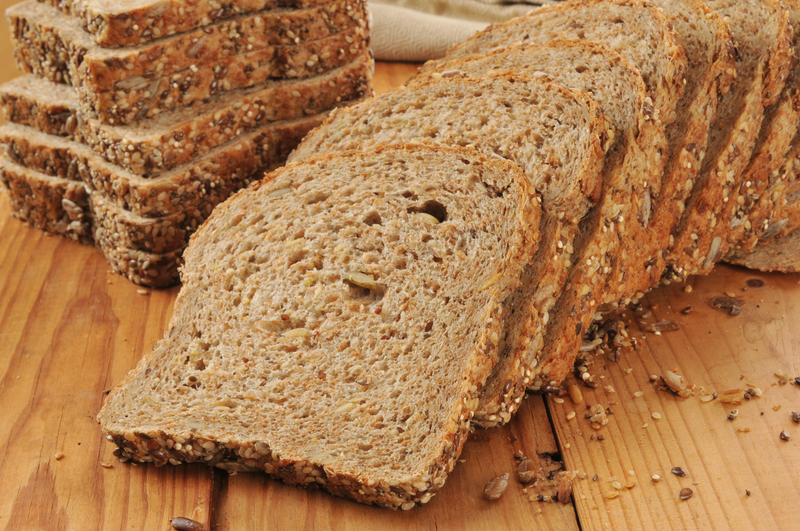Learn How to Wash Velvet Curtains and Prevent Damage
Posted on 17/05/2025
Learn How to Wash Velvet Curtains and Prevent Damage
Velvet curtains instantly infuse spaces with a sense of luxury and sophistication. Their plush texture, rich colors, and dramatic drape make them an exquisite choice for window dressings in homes, offices, and luxury hotels. However, caring for velvet drapes is not as straightforward as laundering typical fabrics. Knowing how to wash velvet curtains--and more importantly, how to prevent damage to the delicate fibers--is essential for ensuring they stay looking gorgeous for years. This comprehensive guide covers all you need to know about cleaning, maintaining, and protecting these stylish window treatments.

Understanding Velvet: What Makes Velvet Curtains Unique?
Before you learn how to safely wash velvet drapes, it helps to understand what distinguishes velvet from other curtain fabrics:
- Pile Fabric: Velvet features a dense pile of upright fibers, resulting in its iconic plush, soft surface.
- Sensitive to Moisture: The pile structure makes velvet prone to crushing, matting, and watermarks when exposed to improper cleaning techniques.
- Material Variety: Velvet can be crafted from silk, cotton, polyester, or a blend. Each type responds differently to cleaning methods.
Because of these characteristics, velvet curtains require extra care during cleaning to prevent permanent damage to the fabric or reduce their luxurious appearance.
Types of Velvet and Their Care Needs
There's more than one type of velvet, and each demands a specific approach:
- Natural Velvet: Made from silk or cotton, natural velvets are especially delicate. Silk velvet in particular should almost always be dry cleaned.
- Synthetic Velvet: Polyester or micro-velvet curtains are a bit more resilient and may sometimes be suitable for gentle hand washing or machine washing (always check the label).
Always read the care label on your velvet curtains. The manufacturer's instructions take precedence, as they account for the specific fiber blend and construction of your drapes.
Preparing to Clean Velvet Curtains: What You Need to Know
You should not rush into washing velvet curtains without preparation. The wrong technique can lead to irreversible pile flattening, fading, or even tearing. Here's what you need to do before any cleaning:
- Check the Label: Look for washing instructions. If it says 'dry clean only', do not attempt to wash at home.
- Test in an Inconspicuous Area: Whether spot cleaning or hand washing, always test your cleaning solution on a small hidden area of the curtain first.
- Remove Hardware: Take the curtains off the rods and remove any hooks or weights that could snag the fabric.
- Vacuum Dust and Debris: Use a vacuum cleaner with a soft brush attachment to gently remove surface dirt before washing or spot cleaning.
Preparation minimizes the risk of dye bleed, pile damage, and hardware scratches.
Should You Wash or Dry Clean Velvet Curtains?
A key part of caring for velvet curtains is deciding on the safest cleaning method.
When to Dry Clean Velvet Drapes
- If the care label says 'Dry Clean Only'.
- If your curtains are made from silk or cotton velvet.
- If the drapes have intricate embellishments, linings, or are very old/valuable.
Dry cleaning uses specialized solvents and gentle agitation to clean velvet without risking pile crushing from water or agitation, ensuring your drapes remain plush and free from watermarks.
When You Can Wash Velvet Curtains at Home
- If the care tag permits machine or hand washing.
- If they're made from polyester velvet or other sturdy synthetics.
- If the curtains aren't heavily soiled or particularly valuable.
In these cases, washing velvet curtains at home is possible with caution. Read on to learn the safest DIY cleaning methods.
How to Wash Velvet Curtains at Home: Step-by-Step
1. Vacuum and Shake
Velvet's plush surface can attract dust and pet hair. Start by:
- Laying the curtains flat on a clean surface.
- Using a soft brush vacuum attachment to sweep away dust. Move in the direction of the nap (the direction in which the fibers naturally lie).
*This will prep the curtain for either spot cleaning or washing and minimize dirt setting into the pile during the wash.*
2. Spot Clean Any Stains
For small, localized marks try spot cleaning velvet curtains using the following:
- Dilute a small amount of mild detergent in cool water.
- Dampen a clean white cloth in the solution and blot (don't rub!) the stain. Always keep movements gentle and avoid soaking the area.
- Blot with a dry towel to remove excess moisture.
Always spot-test the solution first!
3. Hand Wash Velvet Drapes (If Allowed)
If your velvet curtains can be hand washed:
- Fill a tub or basin with lukewarm (not hot) water.
- Add a mild liquid detergent, ideally formulated for delicates.
- Submerge one curtain panel at a time. Gently swirl, do not rub or wring.
- Let soak for a few minutes, then rinse thoroughly in cold water.
Never wring or twist velvet--this can crush the pile and permanently mar the surface!
4. Machine Wash Velvet Curtains (With Caution)
If (and only if) the care label allows it, you can machine wash velvet curtains:
- Use a delicate/wool cycle with cold water.
- Place curtains in a mesh laundry bag to prevent snagging.
- Add only a small amount of gentle detergent.
- Skip the spin cycle, if possible, or set it to the lowest speed.
How to Dry Velvet Curtains Properly
Never put velvet curtains in a tumble dryer. Instead, here's how to safely dry them:
- Lay the curtain flat on a clean towel. Roll gently to soak up excess water--do not squeeze or wring.
- Unroll and lay flat to air-dry, or hang over a thick, padded rod (avoid sharp creasing).
- Let them dry out of direct sunlight to prevent color fading.
Proper drying prevents shrinkage, loss of shape, and pile damage.
How to Prevent Damage to Velvet Curtains
The beauty and longevity of velvet drapes depend on regular care and damage prevention. Consider these essential tips:
- Handle with Clean Hands: Natural oils and dirt can quickly soil the pile.
- Avoid Over-Cleaning: Clean only when necessary--over washing reduces plushness and vibrancy.
- Shield from Sunlight: Prolonged direct sun exposure can cause fading.
- Keep Away from Moisture: High humidity rooms may encourage mildew or watermarking.
- Use a Clothes Steamer: To release creases, hold a garment steamer a few inches away and gently steam in the direction of the nap.
- Maintain Regular Dusting: Lightly vacuum or shake out dust every couple of weeks.
Troubleshooting: Common Velvet Curtain Problems
Flattened or Crushed Pile?
If portions of your velvet drapes appear flattened, don't panic.
- Use a handheld garment steamer, applying steam a few inches away from the material while gently brushing the pile with a soft-bristle clothes brush in the nap's direction.
Avoid direct ironing! High heat can scorch the fibers, causing irreversible damage.
Watermarks on Velvet Curtains
If velvet curtains get wet and show water stains:
- Try evenly steaming the area using a clothes steamer at a safe distance, then lightly brush.
- If spots persist, consider professional cleaning to even out the marks.
Lingering Odors
- If the fabric smells musty, sprinkle a small amount of baking soda on the surface, let it sit for 30 minutes (test first), then gently vacuum it off.
- Alternatively, hang curtains outside on a dry, breezy day--avoid direct sun exposure.
FAQs: Velvet Curtain Cleaning
Can I Use a Fabric Softener?
No. Most velvet curtains--especially those with synthetic fibers--should not be treated with fabric softener as it may clog the pile and cause matting.
How Often Should I Clean Velvet Curtains?
Unless visibly soiled, wash or dry clean velvet curtains every 12-18 months. Regular dusting and spot cleaning can prolong the time between deep cleans.
Can You Iron Velvet Curtains?
Avoid direct ironing. If you absolutely must remove creases, place a velvet-safe pressing cloth between the iron (set to the lowest heat with no steam) and the fabric, and never press down--hover gently, or use steam.
What If My Velvet Curtains Have a Lining?
Lined curtains can be tricky, as the lining and velvet may have different cleaning needs. Err on the side of caution and opt for professional dry cleaning.

Professional vs. DIY Cleaning: Which Is Better?
Many homeowners wonder whether to clean velvet drapes themselves or hire a professional.
- DIY cleaning is more affordable and works well for durable synthetic velvets with straightforward care instructions.
- Professional cleaning is recommended for silk, cotton, embroidered, or vintage velvet curtains that may be irreparably damaged by water, agitation, or mishandling.
If in doubt, always err on the side of protecting your investment with a professional touch.
Conclusion: Keep Your Velvet Curtains Looking Flawless
To clean velvet curtains safely and prevent damage, preparation, gentle handling, and respect for the fabric's unique properties are essential. Whether you choose to wash velvet curtains by hand, in your washing machine, or trust them to a pro, the right approach ensures your drapery retains its brilliance, softness, and dramatic flair for many seasons. Don't forget to dust regularly, spot clean stains promptly, and avoid overwashing. By following these best practices, you'll maintain the splendor and longevity of your luxurious velvet window treatments.
Ready to enjoy cleaner, softer, and damage-free velvet drapes? Bookmark this guide and keep your curtains looking spectacular year after year!




